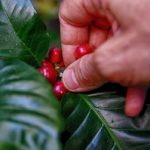Lowering glucose spikes through diet alone to prevent metabolic disorders can be a challenge because of patient compliance. As this recent study shows, there is increasing evidence that low-glycemic index and low-glycemic load dietary patterns may play a role in preventing disorders such as overweight, obesity, glucose intolerance, pre-diabetes, diabetes, and cardiovascular disease. Two small human pilot trials, published in the journal Nutrients, showed that a blend of three plant-based ingredients from white mulberry, white bean and green coffee resulted in fewer episodes of postprandial reactive hypoglycemia in healthy subjects.
The researchers based their theory on bioactive ingredients known to inhibit digestion and reduce carbohydrate  absorption. They specifically looked: 1. mulberry leaves (Morus alba L.), known for their bioactive phytochemicals including flavonoids, steroids, triterpenes, quercetin, kaempferol, chlorogenic acids, and caffeic acid, as well as the α-glucosidase inhibitor 1-deoxynojirimycin (DNJ); 2. white bean (Phaseolus vulgaris), which produces an α-amylase inhibitor that prevents starch digestion. Previous studies show that the white bean extract reduces the postprandial plasma glucose, which eliminates a subsequent fall in glucose levels. And, 3. green coffee bean extract, rich in chlorogenic acid, which may reduce glucose uptake in the intestine by dissipating the Na+ electrochemical gradient that drives glucose accumulation. Chlorogenic acid also inhibits the activity of hepatic glucose-6-phosphatase, which is implicated in glucose homeostasis.
absorption. They specifically looked: 1. mulberry leaves (Morus alba L.), known for their bioactive phytochemicals including flavonoids, steroids, triterpenes, quercetin, kaempferol, chlorogenic acids, and caffeic acid, as well as the α-glucosidase inhibitor 1-deoxynojirimycin (DNJ); 2. white bean (Phaseolus vulgaris), which produces an α-amylase inhibitor that prevents starch digestion. Previous studies show that the white bean extract reduces the postprandial plasma glucose, which eliminates a subsequent fall in glucose levels. And, 3. green coffee bean extract, rich in chlorogenic acid, which may reduce glucose uptake in the intestine by dissipating the Na+ electrochemical gradient that drives glucose accumulation. Chlorogenic acid also inhibits the activity of hepatic glucose-6-phosphatase, which is implicated in glucose homeostasis.
The combination of white mulberry leaves, white bean extract and green coffee bean extract (brand name Tribitor®) was tested to see how it might reduce the negative consequences of consuming high-GI and high-GL meals. In Study 1, two products were investigated: IP-A (a complex of 600 mg white mulberry, 1200 mg white bean extract, and 400 mg green coffee) and IP-B (a complex of 600 mg white mulberry, 1200 mg white bean extract, 400 mg green coffee, with the addition of 2000 mg inulin and 3000 mg glucomannan). In Study 2, only IP-A was investigated.
In study one, 32 subjects received an investigational product/placebo before a standardized meal at two visits. In study two, 150 subjects received an investigational product/placebo before five different standardized meals.
In Study 1, subjects received a white bread roll as a standardized meal. In Study 2, subjects received one of the following five meals: a coke-type beverage and puffcorn; breakfast cereal with vanilla milk; raspberry muffin and liquid blueberry yoghurt; French fries with ketchup; or cheese pasta.
The results showed that the combination of ingredients was associated with lower blood glucose and insulin levels 20-30 minutes after meals when compared to placebo. As the length between meals was extended, the levels were similar.
Our studies show the newly developed product Tribitor® can limit the disadvantageous consequences of consuming high-GI/high-GL meals. These data suggest that α-amylase and α-glucosidase inhibitors present in the white bean and mulberry extracts might be effective in decreasing the absorption of glucose from a carbohydrate-containing meal, and this activity is even more prominent when combined with a glucose transport inhibitor like green coffee extract. This can be especially helpful for people who have problems adhering to dietary restrictions. ~ Edyta Adamska-Patruno, lead researcher
The authors noted the following benefits:
- Because one of the symptoms of hypoglycaemia is a sudden feeling of hunger, reducing the number of hypoglycaemic episodes can help limit uncontrolled eating between main meals, thereby helping to reduce or maintain body weight.
- The particular combination of plant extracts has synergistic effects on postprandial glucose metabolism. The were more significant than the effects of administering the singular ingredients, even at higher doses.
- The synergistic effects of the plant extracts—and the possibility of using lower doses of ingredients—could minimize possible side effects.
Conclusion/ The researchers note that the long-term efficacy and safety outcomes, as well as its efficacy and safety in people with impaired glucose metabolism and T2DM, must be confirmed in further studies. However, this trial suggests that this ingredient combination may be an effective dietary supplement for weight, obesity, glucose intolerance, prediabetes, and type 2 diabetes, together with other dietary or medical recommendations.
For more on the study, read the full text here.





